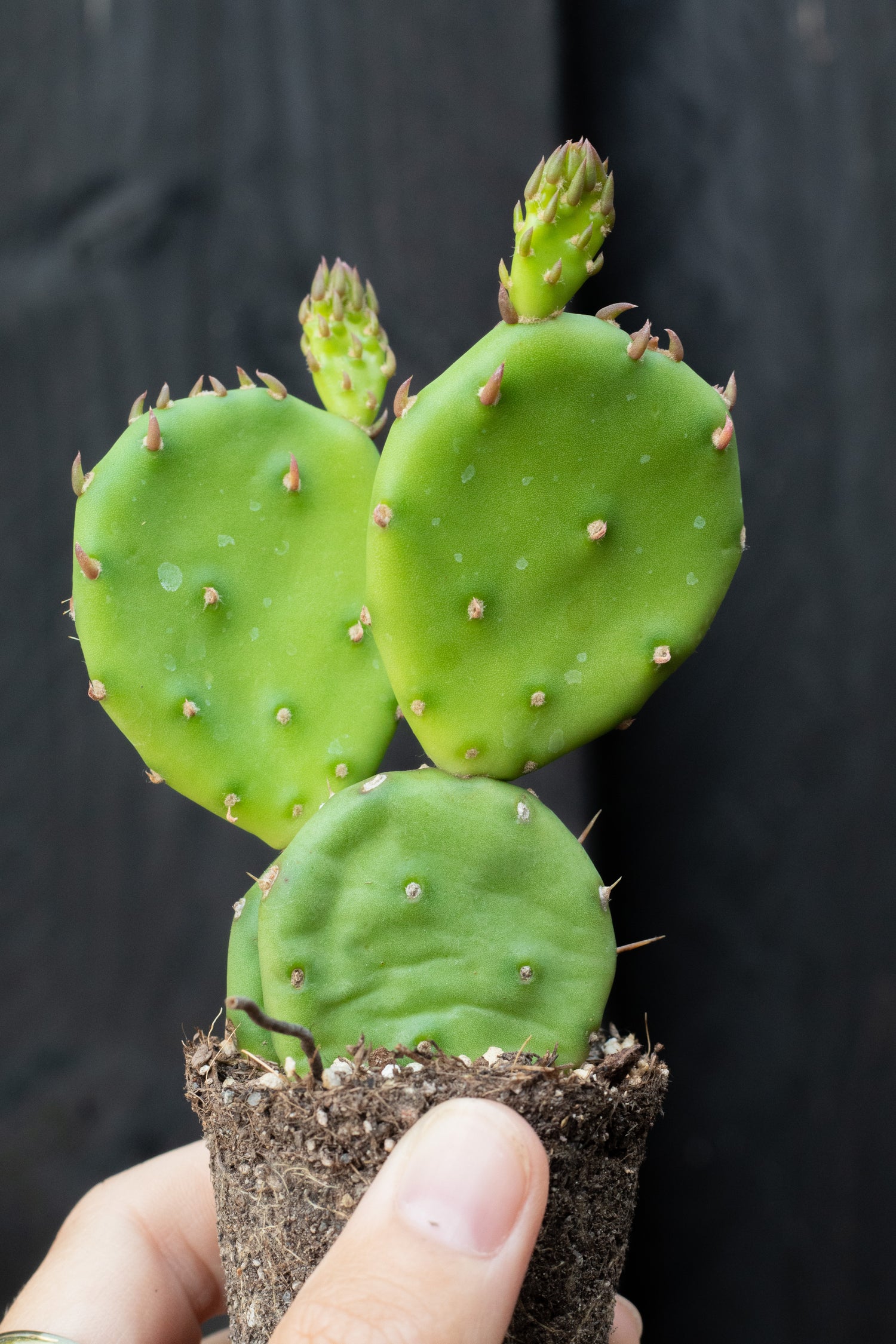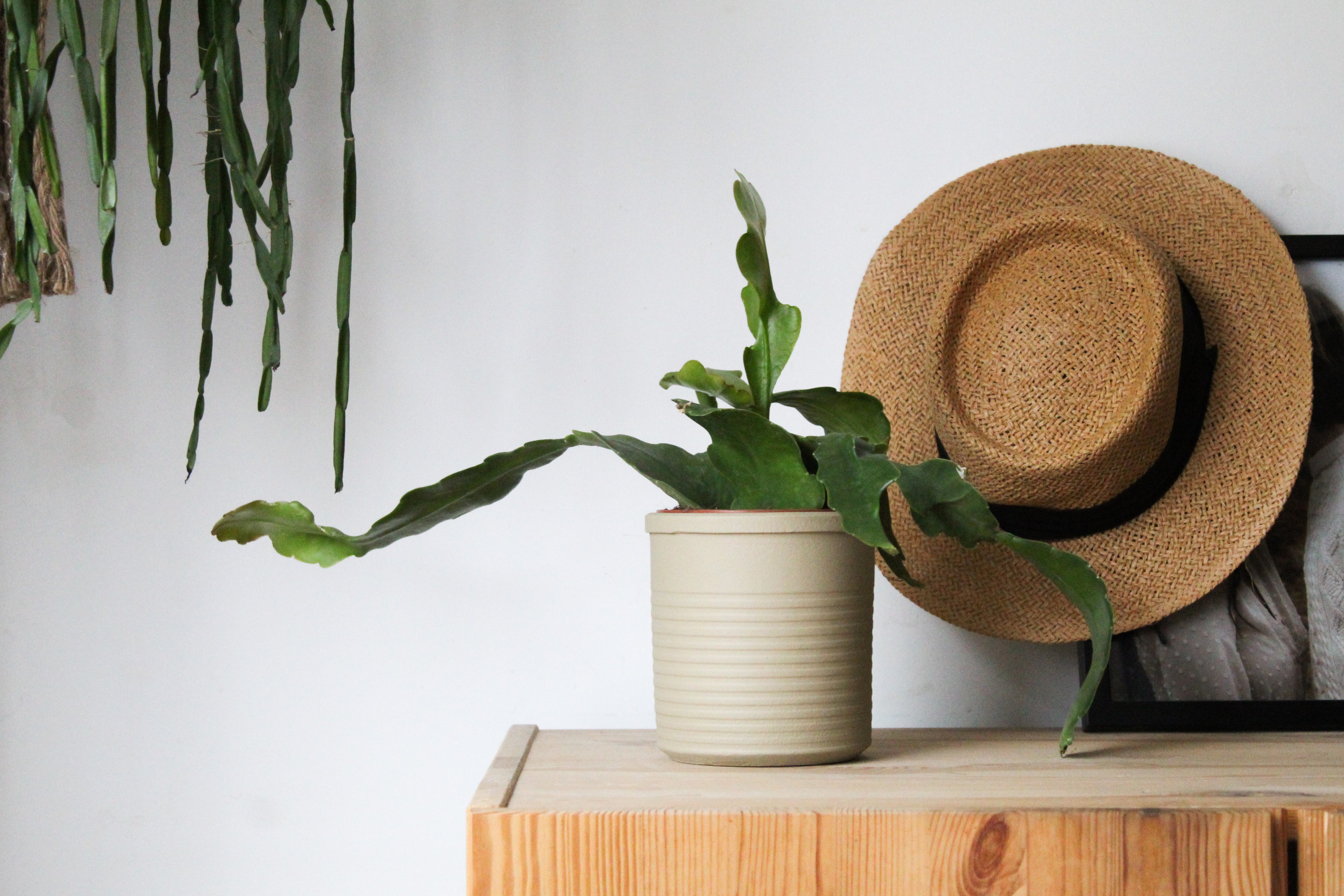Hardy and frost-resistant cacti and succulents
When it is cold, bleak and rainy in the winter, you do not immediately think of cacti in your garden, on a green roof or for example under your veranda. However, there are a number of cacti and succulents that do well and can be a really nice addition to your garden, roof or other place in your garden. In this blog I would like to take you along. In addition, we have a nice assortment of cacti and succulents that are winter hardy or frost resistant almost all year round. With this blog I hope to interest you in this group of plants, but also to give you care and other nice tips.

Cacti
Most cacti that can tolerate frost are frost-resistant plants. They can tolerate frost well, but for this they need to be kept dry and not watered from late autumn until spring.
Two cacti species that we have had good experience with and that can stand outside unprotected all year round (hardy) are the Opuntia humifusa and the Cylindropuntia imbricata. Both cacti can tolerate the combination of frost and rain in our winters well.
Just like a real cactus, there are a number of Yucca and Agave species that are also winter hardy, or frost resistant. Plants from both genera and mainly the Yucca, can grow very large over time. So keep this in mind when planting these in the garden.
Succulents
Among succulents, the hardy species such as Sempervivums, Sedum and Delosperma are particularly well -known. The Sempervivums and Delosperma species are mainly seen in bowls in the garden and in rock gardens. The sedum species are nowadays known from the green roofs where they are often used. Some other species that are less well known, but can often withstand frost well: Jovibarba, Orostachys, Sinocrassula and the Rosularia. We do recommend that you check each plant carefully to see if it is winter-hardy. It is not always the case that an entire plant genus is winter-hardy. We take the Sedum as an example. There are a number of species that can withstand frost well, but also a number that can only be kept as a houseplant.
However , in addition to the well-known succulents, we also have a number that are frost-resistant, where you would not immediately expect this. Think of some Lithops species, but also a large number of other Mesemb species and Aloe species.
Want to see the exact types that are frost-resistant or winter-hardy? You can find them on the link here. The products describe how many degrees of frost they can withstand and whether they should be kept dry.


Light, water and nutrition
It is best to give the plants the lightest possible spot. They can also definitely be placed in full sun. Because the plants are outside, they will burn less quickly, because the air around them is always moving. Are you putting the plants outside for the first time? Then we do recommend that you let them get used to the sun for a week. They are often not used to direct full sun, the whole day. Build this up over a week with a few hours, to half a day and then the whole day. We do not recommend a spot in the shade or where the sun only shines for 1 or 2 hours.
If you place your cactus or succulent in a place where it is exposed to rain from April to September, you do not need to give it extra water. However, you could give the plants some extra water when a dry period of several weeks in their growth period is coming up, so that growth does not slow down. Is your plant sheltered from the rain? Then you can simply water it as described on the product page. You do not need to water the plants in the period from October to March. Then they go into dormancy.
Your cacti and succulents that are outside also need food, you can add this with water on the soil or sprinkle it around the plant. Especially when you have planted the plants and they are in the rain, it is important to add food. The rain washes away nutrients in the soil. You can then add food to the plants at this time. Because the soil is still wet, the food will not wash away.
Cold wintering and flowering
Hardy and frost-resistant cacti and succulents not only look beautiful in your garden, the cold also has another advantage. Some cacti species need a cold winter to start flowering in the spring or to really start flowering profusely, where they would otherwise only show a single flower.
Diseases and pests outside
Cacti and succulents that are outside usually have a strong resistance. This is often accompanied by the outside air. Pests such as mealybugs, spider mites and scale insects are seen a lot less with these plants. It is not entirely impossible, so check your plants for them every now and then.
But it is not completely free of vermin either. What you should especially watch out for are snails and caterpillars. These are animals that often sit on and around other plants and happen to also like a bite of cactus or succulent.
Caterpillars will not directly come to your cacti and succulents. But if you have a part of the garden with vegetables or other plants that are popular with caterpillars, it is advisable to check your cacti and succulents extra for this.
Applications
Are you excited about cacti and succulents for the garden? Then we have described a number of possibilities below in which they fit perfectly.
-
Rock gardens, where you can plant hardy succulents. They often complete the rugged look of your rock garden. But you also increasingly see frost-resistant cacti being used in rock gardens. This often gives you just a few more options. However, you do need to protect them from the rain in the winter. You can do this by creating a cover above the area with these plants in the winter period, placing them in well-draining soil and, for example, placing them on higher parts of the rock garden. Here, the water often remains in the soil for a shorter time.
-
Veranda or other outdoor seating. Inside, it is quite normal that we place a cool pot with a cactus or succulent next to the couch or on the table. But why not next to that nice outdoor seating. A winter-hardy or frost-resistant cactus or succulent is ideal for this. They can stay outside all year round, are easy to care for and you hardly have to worry about them.
-
Your balcony. Don't have a garden, but do have a balcony? Then these plants are also ideal for you. Often a balcony is also completely or partially protected from the rain and you can keep winter-hardy or frost-resistant cacti and succulents there all year round.
-
Green roofs. You probably know these from the mats with different Sedum species growing on them. But many hardy cacti and succulents also do well here and are a nice change from the Sedum. We advise against frost-resistant species in this case, because green roofs are not protected against rain in the winter period.

Are you also enthusiastic after reading this blog? Or are you just curious about which plants are winter-hardy or frost-resistant? Take a look at our assortment here . Do you have any questions or additions after reading the blog? Then you can always send us a message via the contact button at the bottom of the page.



